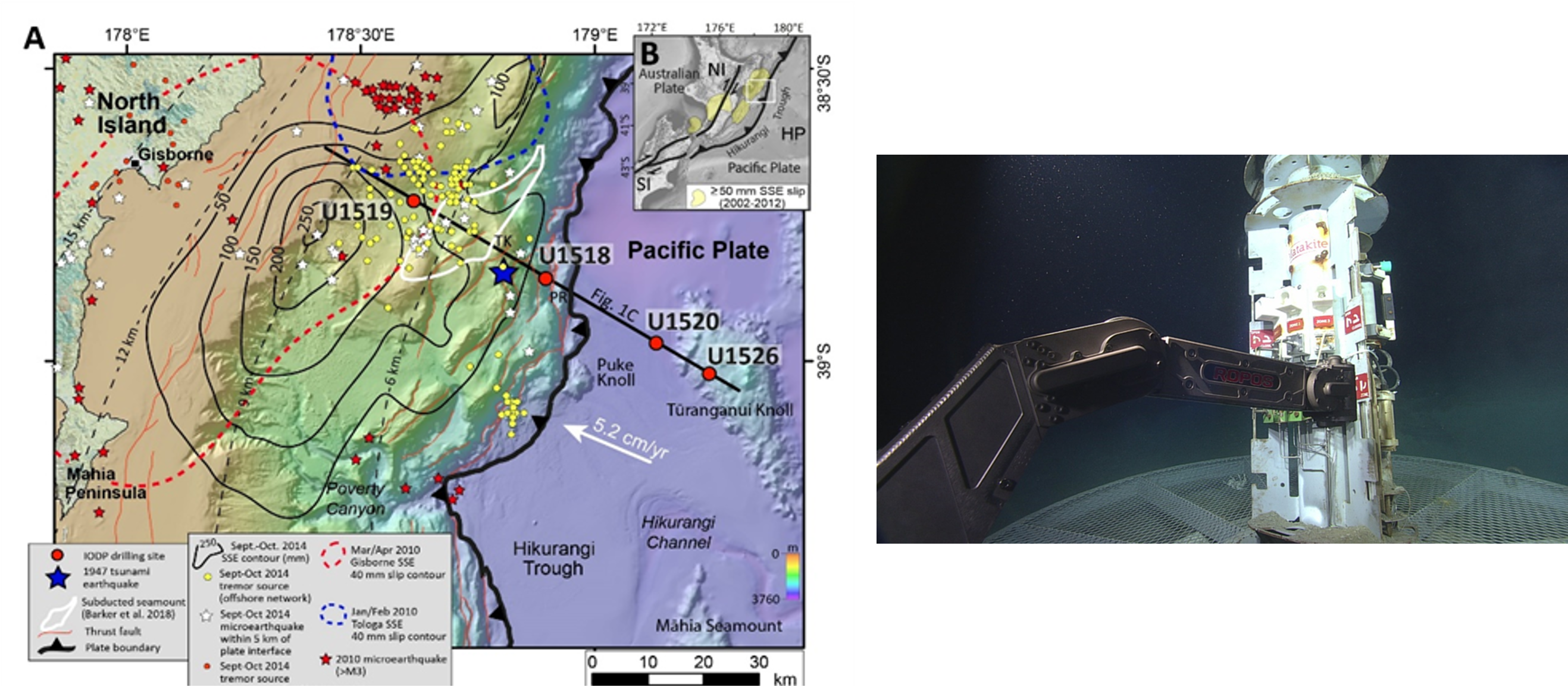We are excited to invite you to the 2025 GRG (Geocoastal Research Group) and Geology-Geophysics seminar, featuring Prof. Laura Wallace, who is a geophysicist and a professor at GEOMAR and the ANZIC’s first female Co-Chief Scientist of IODP. Laura will be presenting on “Unlocking the secrets of slow slip events with IODP drilling“. In this engaging talk, she will share insights from subseafloor borehole observatories at New Zealand’s Hikurangi subduction zone, showing how drilling and near-field monitoring reveal why and how slow slip events occur, what this means for earthquake science, and the exciting new technical advances driving discoveries in geoscience.
This seminar is presented as part of the ANZIC-funded ANZIC Distinguished Lecturer Series (https://www.iodp.org.au/anzic-distinguished-lecturer-series/) #NCRISenabled
Date: October 1, 2025
Time: 11:00 a.m. – 12:00 p.m. AEST, Sydney Time
Location: Room 449 (Conference Room), Madsen Building (F09), School of Geosciences
or Online (Join via zoom)
We look forward to seeing you there in person or joining us online!
https://uni-sydney.zoom.us/j/83870450679?from=addon
Process Interactions at Plate Boundaries: Rifts, Mountains, Resources
Abstract
The discovery that slow slip events (SSEs; lasting days to years) play a major role in the accommodation of plate motion at subduction zones has transformed our understanding of fault mechanics and earthquake processes. However, many outstanding questions remain regarding the physical processes and properties that promote slow slip event occurrence, and their distribution. The northern Hikurangi subduction zone offshore New Zealand hosts the world’s shallowest, well-documented slow slip events, and presents a globally unique opportunity to use scientific ocean drilling to reveal the physical properties and processes that produce shallow SSEs. The close proximity of these events to the seafloor (less than a few km) offers important opportunities to monitor crustal deformation during SSEs in the very near-field with borehole observatories. During IODP Expeditions 372 and 375, the JOIDES Resolution acquired geophysical logs, cores, and installed two subseafloor observatories on a transect across the northern Hikurangi subduction margin. The coring and logging data provide unprecedented insights into the fault rocks entering a slow slip source region, and reveals that lithological heterogeneity and the healing characteristics of the fault rocks play a major role in shallow SSE occurrence. The Hikurangi borehole observatories have detected pore pressure changes as a proxy for volumetric strain during several SSEs, and provide an unparalleled view of the spatio-temporal distribution of both spontaneous and dynamically triggered slow slip events near the trench. Results from IODP borehole observatories at Hikurangi, Nankai, and Costa Rica demonstrate that such observatories provide the highest fidelity measurements currently available of offshore crustal strain, and should be installed and utilized more widely.
Graphical Abstract

![]()

